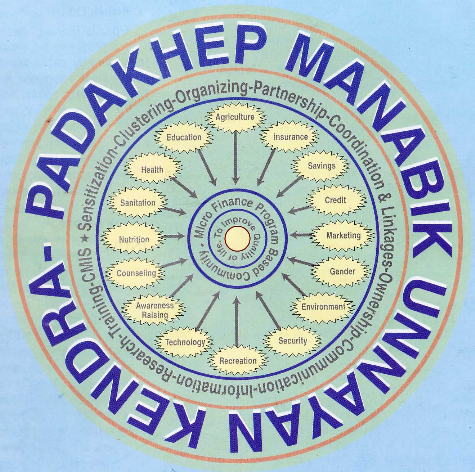CHAPTER 3: DEMAND VS. SUPPLY
HOW BEST TO MATCH
MICROFINANCE
WITH STREET CHILDREN?
Key Points: Microfinance, a powerful tool
aimed at delivering financial services to poor people, has become a new way of
intervening in the lives of street children. However, those interventions are
few very diverse.
Relying on the demand drivers of street children for financial
services expressed in the previous chapter and on the general characteristics
and needs of our target population, as well as equipped with two important
evaluation criteria (effectiveness and sustainability), we start our building
process in three phases: we first build a minimalist microfinance
for street children framework, composed only of credit and
savings; then, we build a «microfinance plus
framework» by adding the vocational training component;
finally, we add the operational requirement: «social services», in
order to reach a comprehensive microfinance plus framework for
street children.
This final model being built, we turn to the most adequate
provision model, by pointing out that the most appropriate one, in terms of
sustainability, might be the youth organisation, but that large place can be
made for microfinance institutions that can work in partnerships with youth
organisations and gain considerably in terms of future clients.
The final part of this chapter tests the validity of our new
framework, by applying it to Padakhep, an innovative microfinance institution
in Bangladesh targeting street children with microfinance.
1. MICROFINANCE: A WAY TO SUPPLY FINANCIAL SERVICES TO POOR
PEOPLE
Microfinance refers to the provision of small scale financial
services, primarily credit and savings, to poor and disadvantaged people
(Robinson, 2001:9). It is being regarded as a powerful poverty alleviation tool
and is bringing a lot of hope to the poor people all around the world. The
microfinance movement - which some like to call «the microcredit
movement»- started with the vision that the poor are bankable and that the
conventional wisdom - claiming that the poor people could not use credit and
that the costs of providing it was too high - was wrong (Harris, 2002).
The new vision saw the emergence of financial institutions all
around the world, united under the banner of microfinance and sharing a
commitment to serving clients that have been excluded from the formal banking
sector (Morduch, 1999). Those clients were initially offered microcredit in
order to start microentreprises and to escape from the circle of poverty.
However, as the movement spread all over the world, there has been recognition
that poor people needed a variety of financial services, not just credit (UNDP,
1999). Now, the movement has expanded and, at the end of 2002, was claiming
over 65 million customers (Aghion and Morduch, 2005). The essence of
microfinance is to draw ideas from existing «informal sector» credit
mechanisms - like intra-family loans, Rotating Savings and Credit Associations
(ROSCAs)50(*), and local
moneylenders - while creating a viable conduit for capital infusions from
formal sector banks, donors, and governments (ibid).
The supply of financial services to the poor has witnessed a
huge expansion worldwide, largely because the poor were expressing a high
demand. This demand has undergone some «changing conceptualizations»
over the last four decades (Matin, Hulme et Rutherford, 1999). First, between
1950s and 1970s, there was a focus on the small farmers who needed agricultural
credit. Then, from the 1980s to 1995s, the perception has been enlarged and the
poor were seen as microentrepreneurs which needed microcredit. Now, we have
entered «the microfinancial services era» where the poor are seen as
«a diverse group of vulnerable households with complex livelihoods and
varied needs» (ibid).
1.1. Products: credit, savings and insurance nexus
Box.3.1..

In the new microfinancial services era, three types of
products are generally delivered to poor people: microcredit, microsavings and
microinsurance.
A microcredit refers to the process which
allows a lump sum of money to be enjoyed now in exchange for a series of
savings to be made in the future in the form of repayment instalments
(Rutherford, 1999).
Rutherford (1999)
It has three characteristics: a size, a term and an
interest rate, which vary among semi-formal providers.
A. Loan sizes are the first
characteristic which differentiates a microcredit from a formal credit. Indeed,
loan sizes are generally smaller than those of formal banks. For example, the
MicroBanking Bulletin Survey, analysing 72 microfinance programs worldwide,
found that average loan balances varied from $133 to $2871 depending on the
target group, with a global average balance of $415.
B. Typical loan terms are
also diverse. As pointed by Morduch (1999), Grameen Bank has a loan term of 1
year, Banco Sol Bolivia from 4 months to 1 year, Bank Rakyat Indonesia from 3
to 24 months, and FINCA of 4 months. It is therefore depending on the
microfinance institution policy.
C. Regarding interest rates,
Aghion and Morduch (2005) point out that in Bangladesh and Indonesia, the
main institutions charge typically around 30 percent (in economies with
inflation at about 10 percent). However, many MFIs around the world charge
higher interest rates, in order to achieve sustainability.
Box. 3.2.

Microsavings refers to the process which
allows a lump sum to be enjoyed in future in exchange for a series of savings
made now (Rutherford, 1999).
Rutherford (1999)
Matin and al. (1999) argue how savings - which they also
define as «making choice not to consume cash»- is the fundamental and
unavoidable first step in money management, without which financial services
cannot operate. It made therefore a huge apparition in the microfinance area
and Robinson (2001) points out how deposit services are more valuable than
credit for poorer households. Saving products are generally of two kinds:
voluntary or/and compulsory, the latter «forcing» the clients to save
a certain amount of money in order to get access to a loan. Interest is
generally provided against savings deposit.
Finally, Microinsurance allows a lump sum to
be enjoyed at some unspecified future time in exchange for a series of savings
made both now and in the future (Rutherford, 1999).
Cohen and al (2003) point interestingly the utility of
insurance - «Credit and savings services offered by microfinance
institutions can reduce vulnerability to risk by contributing to increases in
income, diversification of income sources, and asset building. Access to
microinsurance could enable people to move into an even more proactive mode,
and reduce the stress often caused when people deplete savings, borrow, or sell
assets to deal with shocks after they occur» (Cohen et al., 2003).
However, as noted by Churchill and Brown (1999)51(*), microinsurance products have addressed a fairly
narrow range of risks and the coverage of the poor population has been limited.
The range of microinsurance products includes mainly credit insurance and life
insurance. Some do also offer health insurance plans, property, crop insurance
and the new rainfall insurance.
* 50 For a very interesting
description of those informal mechanisms, see Rutherford (1999)
* 51 Quoted in Cohen et
al .(2003)
| 


